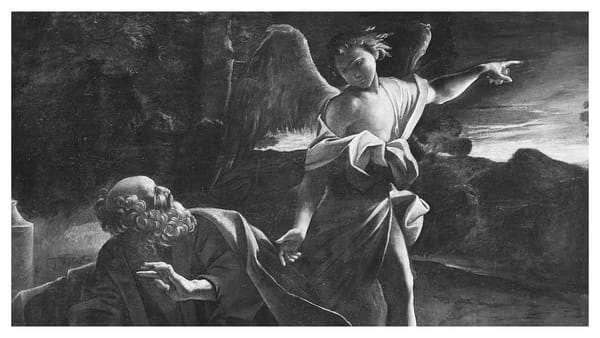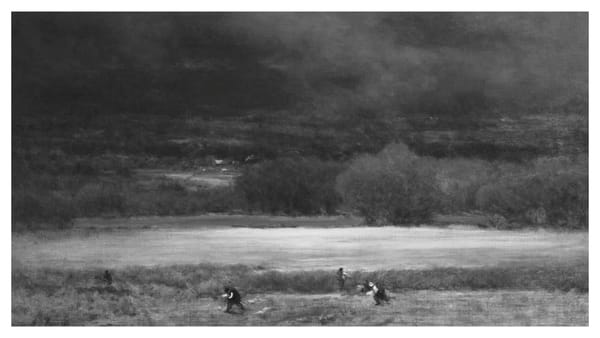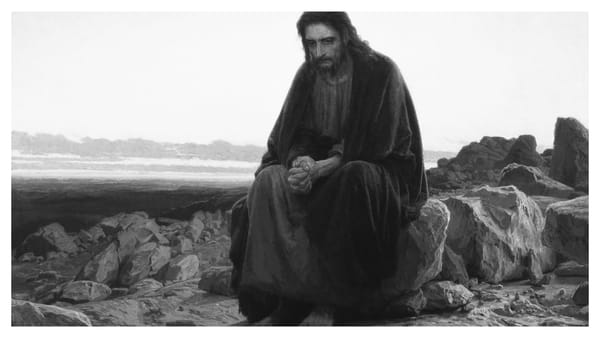The Burnt Offering
The burnt offering, as described in Leviticus, represents total consecration to God and is the foundational pathway to experiencing God's manifest presence and glory in the end times. This consecration must be specific, intentional, and complete to bring believers to spiritual perfection.
Sermon Details
- Title: Laws Concerning Offerings: The Burnt Offering and God's Glory
- Speaker: Neville Johnson
- Date: Not specified
- Occasion: Part of a series on the Book of Leviticus
Introduction
Historical Context
The book of Leviticus, though often overlooked in contemporary Christian study, held such paramount importance in Jewish tradition that it served as foundational education for young boys. Between the ages of six and nine, Jewish children were required to memorize not just portions, but the entire book of Leviticus. This emphasis demonstrates the book's critical role in understanding how to approach God's presence and participate in His divine purposes.
The burnt offering, detailed in Leviticus 1, represents far more than a historical religious ritual. It establishes a pattern for spiritual development that transcends its historical context, providing principles that remain vital for believers seeking deeper spiritual experience. This pattern, as explained in the sermon, forms the backbone of genuine spiritual progress and preparation for end-time events.
Contemporary Significance
The teaching bridges ancient practices with modern Christian experience through three essential frameworks. First, regarding personal revival, the burnt offering pattern provides a foundational pathway for individual spiritual growth. It outlines specific steps through which believers can progress from general commitment to specific consecration, ultimately experiencing God's manifest presence in increasing measure. The speaker emphasizes that this isn't merely theoretical but provides practical steps for developing genuine spiritual authority.
Second, in terms of corporate revival, these principles establish a blueprint for church renewal. The pattern of the burnt offering, when understood and applied collectively, creates an environment conducive to genuine corporate transformation. This aspect becomes particularly significant when considering the speaker's emphasis on end-time preparation and the need for the church to function at its highest spiritual capacity.
Third, and perhaps most urgently, the teaching positions these principles within the context of end-times preparation. The speaker argues that understanding and applying these patterns isn't merely optional for those seeking deeper spiritual experience but essential for preparing the church for its role in end-time events.
End-Times Framework
The teaching draws significant inspiration from Isaiah 60:1-3, which prophesies a time when darkness covers the earth while God's glory simultaneously rises upon His people. This dual reality - increasing darkness in the world alongside increasing glory in the church - forms the prophetic backdrop for understanding the urgency of these principles.
The speaker emphasizes that we are living in the time of this prophecy's fulfillment, pointing to current world conditions while highlighting the parallel promise of unprecedented glory manifesting in the church. This creates a compelling argument for why understanding and applying the principles of the burnt offering is particularly crucial "in these next few years."
Theological Foundation
Understanding God's Glory
The sermon provides a rich theological understanding of God's glory through both Hebrew and Greek biblical concepts. In Hebrew, the word "kabod" (כָּבוֹד) comes from a root meaning weight or heaviness. This isn't merely metaphorical - it describes a tangible presence that can be felt and experienced. The speaker emphasizes that this weightiness of God's presence represents everything that God is - His nature, character, and manifest presence.
In Greek, the word "doxa" (δόξα) emphasizes the visible manifestation or appearance of God's presence, often associated with radiance or brilliant light. From this word we derive our term "doxology," connecting it to the praise and worship that naturally flows from encountering God's manifest presence. The speaker notes that both these concepts - the tangible weight and the visible glory - are meant to be experienced by believers, not just understood theoretically.
This understanding is powerfully illustrated through Moses' encounter with God in Exodus 33. When Moses asked to see God's glory, God's response revealed that His glory encompasses "all My goodness" - the totality of who God is. However, the account also demonstrates human limitations in experiencing this glory, as Moses could only endure seeing God's "back parts." This introduces a crucial concept: the need for progressive preparation and transformation to experience increasing measures of God's glory.
The Levitical System
The five offerings described in Leviticus form a complete system designed to bring God's people to perfection (spiritual maturity). These offerings are:
- The Burnt Offering, which represents complete consecration and serves as the foundation for all other offerings. It deals with surrendering our lives entirely to God's purposes.
- The Meal Offering, focusing on the dedication of our daily lives and service to God.
- The Peace Offering, establishing and maintaining proper relationship and fellowship with God.
- The Sin Offering, addressing the fundamental problem of our sinful nature.
- The Trespass Offering, dealing with specific acts of sin and their consequences.
The speaker emphasizes that these weren't merely ritualistic requirements but form a progressive pattern for spiritual development that remains relevant for contemporary believers. Each offering builds upon the previous ones, creating a systematic approach to spiritual growth and transformation.
New Testament Fulfillment
The sermon draws powerful parallels between the Old Testament burnt offering and Christ's perfect sacrifice. Just as the sacrificial lamb required four days of inspection before Passover, Christ underwent examination by four different authorities: Herod, Pilate, Caiaphas, and Annas. Each declared they could find no fault in Him, fulfilling the requirement of a perfect, unblemished sacrifice.
This pattern extends to believers through Paul's exhortation in Romans 12:1-2 to present our bodies as "living sacrifices." The speaker emphasizes that this isn't merely poetic language but requires the same level of inspection, specificity, and completeness as the Old Testament burnt offering. The key difference is that rather than a one-time sacrifice, this represents an ongoing process of consecration and transformation.
The Pattern of the Burnt Offering
Progressive Levels of Consecration
The teaching details three distinct levels of the burnt offering, each representing a deeper level of consecration and commitment:
The Turtledove Offering represents the initial level of consecration. This was the least expensive offering, making it accessible to all. The speaker explains that this correlates to our initial general commitment to God - the moment when we say, "Lord, I give you my life," without fully understanding all that this entails. While this level might lack specificity, it's both necessary and acceptable to God as a starting point.
The Sheep Offering represents an intermediate level requiring more cost and specific commitment. This offering had to be cut into pieces, representing detailed examination and surrender of specific areas of life. The speaker emphasizes that this level requires careful thought and preparation - we must "count the cost" before proceeding. This offering involves surrender of four specific areas (mind, strength, affections, and will), each requiring careful inspection before being placed on the altar.
The Bullock Offering represents the highest level of sacrifice, being the most costly. This level represents the deepest commitment and results in the highest level of spiritual authority. The speaker notes that God may call believers to this level years after their initial consecration, requiring surrender of areas previously unknown or unaddressed.
The Four Areas of Inspection
The sermon details four specific areas requiring examination and surrender, drawn from the pattern of cutting up the sheep or bullock offering:
The Head (Mind) represents our thought life and intellectual processes. The speaker emphasizes that this goes beyond casual commitment to specific consecration of what we allow into our minds. This includes careful consideration of what we read, watch, and listen to. The comparison to the ancient practice of inspecting sacrificial animals for four days suggests we should carefully evaluate our mental consecration before making this commitment. This surrender of the mind addresses issues of intellectual pride, entertainment choices, and thought patterns that oppose God's truth (referencing 2 Corinthians 10:5).
The Fat (Natural Strength) symbolizes our human abilities, talents, and natural resources. The speaker explains that fat in Scripture represents strength and self-sufficiency. This area of consecration requires surrendering our tendency to rely on natural abilities rather than God's power. It often proves particularly challenging for talented or capable individuals who must learn to depend on God's strength rather than their own competence. The speaker notes that this surrender paradoxically leads to greater effectiveness as natural abilities become yielded to and enhanced by divine power.
The Inwards (Affections) deal with our emotional attachments and priorities. This aspect of consecration addresses what Jesus meant when He spoke about loving Him more than family members (Luke 14:26). The speaker carefully explains that this doesn't mean literally hating family but rather ensuring that no relationship supersedes our commitment to God. This area often proves most challenging as it touches our deepest emotional connections and requires proper ordering of our loves and loyalties.
The Legs (Will and Walk) represent our decisions and daily conduct. This encompasses both our decision-making processes and the practical outworking of our faith. The speaker connects this to Colossians 2:6, emphasizing that receiving Christ must be followed by walking in Him. This surrender involves submitting our future plans, career choices, and daily decisions to God's direction, often requiring significant adjustments to our life path.
The Role of Fire and Wood
The sermon presents a profound understanding of the fire's role in the burnt offering and its modern application. The fire represents God's presence and purifying power, which transforms what has been offered. The speaker emphasizes that while the baptism of the Holy Spirit can be received by faith alone, the baptism of fire necessarily involves sacrifice and consecration.
A particularly insightful aspect of the teaching concerns the wood used in the burnt offering. The speaker explains that wood in Scripture consistently represents humanity, as seen in various biblical metaphors and types (such as the wooden boards overlaid with gold in the tabernacle, representing humanity clothed with deity). The arrangement of wood on the altar represents God's sovereign placement of people and circumstances in our lives to fuel the transformational process.
The priests' responsibility to arrange the wood "in order" suggests God's intentional orchestration of relationships and situations that challenge and refine us. The speaker notes that these arrangements often involve difficult people or circumstances that act as "divine sandpaper," revealing areas needing surrender and transformation. This understanding helps believers view challenging relationships and situations as divinely appointed tools for spiritual growth rather than mere obstacles to overcome.
Historical Revival Patterns
The sermon provides valuable historical context by examining various revival movements, particularly from the early 1900s. The speaker highlights a distinct pattern in these movements that differs from modern charismatic experiences:
The Holiness Movements, including early Salvation Army, Church of the Nazarenes, and Mennonite revivals, exhibited a pattern of deep consecration leading to powerful manifestations of God's presence. Unlike modern instant-gratification approaches, these movements invested significant time in preparation through consecration, often spending weeks in focused surrender before experiencing breakthrough.
The speaker notes that these movements experienced what they termed "sanctification" rather than just the baptism of the Holy Spirit. While they may not have spoken in tongues, they experienced profound encounters with God's purifying fire that produced lasting transformation in both individual lives and communities.
This historical perspective serves to challenge contemporary approaches that might seek manifestations of God's power without the foundational work of consecration. The speaker suggests that understanding and applying these historical patterns could be key to experiencing similar depths of revival in our time.
Practical Implementation
Personal Application Process
The speaker emphasizes that consecration isn't meant to be an emotional or impulsive decision but rather a carefully considered process. Drawing from Jesus's teaching about counting the cost before building a tower (Luke 14:28-30), the implementation process should involve several key stages:
The Initial Evaluation requires honest self-examination regarding our current level of consecration. The speaker encourages believers to identify which level of offering - turtledove, sheep, or bullock - best represents their current commitment level. This assessment should be made prayerfully and without comparison to others, recognizing that God deals with each believer progressively.
The Counting of Cost involves careful consideration of what specific consecration will require. Just as the Old Testament sacrifice required four days of inspection, we should take time to understand the implications of our commitment. The speaker suggests writing down specific areas God is highlighting and considering practically what surrender in these areas will mean in daily life.
The speaker particularly emphasizes that consecration shouldn't be made under emotional pressure or during heightened spiritual moments. Instead, it should be approached with careful thought and preparation, ensuring we can maintain our commitment long-term. This might involve taking days or even weeks to process what God is asking, especially when dealing with significant areas of surrender.
Maintaining Consecration
The teaching provides practical guidance for maintaining consecration over time. The speaker emphasizes several key principles:
Regular Renewal of Commitment should become part of our daily spiritual practice. This involves morning renewal of our consecration and evening review of our faithfulness to these commitments. The speaker suggests treating consecration like a covenant, regularly remembering and reaffirming our offerings to God.
Progressive Deepening of consecration occurs as God reveals new areas requiring surrender. The speaker notes that this often happens through circumstances that expose areas we hadn't recognized needed surrendering. Rather than viewing this as failure of our original consecration, we should see it as God's faithfulness in leading us deeper.
Recognition of Divine Arrangements involves understanding how God uses relationships and circumstances to test and strengthen our consecration. The speaker encourages believers to view difficult situations not as obstacles but as divinely arranged opportunities for proving and deepening our commitment.
Modern Application and End-Times Context
Contemporary Church Application
The speaker places special emphasis on the relevance of these principles for the current generation, particularly in light of end-times prophecy. Several key points emerge:
The Urgency of Preparation is emphasized through the speaker's repeated reference to "these next few years." The teaching suggests that the church is entering a critical period requiring higher levels of consecration than previously understood or experienced.
The Connection to Revival is clearly established, with the speaker asserting that understanding and implementing these principles of consecration is key to experiencing both personal and corporate revival. The burnt offering pattern is presented as the "key to revival" that has often been overlooked in modern church practice.
The Relationship to Spiritual Authority is particularly emphasized. The speaker draws a direct connection between levels of consecration and spiritual authority, suggesting that the coming days will require levels of spiritual authority that can only be attained through deep consecration.
End-Times Preparation
The speaker frames this teaching within a specific end-times context, highlighting several crucial points:
The Manifestation of Glory, prophesied in Isaiah 60, is presented as imminent, with darkness covering the earth while God's glory rises upon His people. The speaker suggests that the burnt offering principles provide necessary preparation for this manifestation.
The Harvest Connection is emphasized, linking increased consecration to effective ministry in the end-times harvest. The speaker suggests that the level of spiritual authority needed for this harvest can only come through deep consecration.
The Time Factor is repeatedly emphasized, with the speaker stating that "time is running out" and these principles must be understood and implemented quickly to prepare for coming events.
Practical Study Resources
Implementation Questions
The teaching suggests several key questions for personal reflection and group discussion:
Regarding Current State:
- What is your current level of consecration (turtledove, sheep, or bullock)?
- Which of the four areas (mind, strength, affections, will) most needs attention in your life?
- How has God arranged "wood" (people/circumstances) in your life to fuel transformation?
Regarding Progress:
- What specific areas is God highlighting for deeper consecration?
- What practical steps are needed to implement these principles?
- How can you maintain consecration in challenging circumstances?
Regarding End-Times Preparation:
- How does your current level of consecration align with end-times requirements?
- What areas need strengthening to prepare for coming challenges?
- How can these principles be implemented corporately in your church community?
Scripture Meditation Guide
The speaker's teaching suggests focused meditation on several key passages:
For Understanding Glory:
- Exodus 33:18-23 (Moses's request to see God's glory)
- Isaiah 60:1-3 (End-times glory prophecy)
- 2 Corinthians 4:17 (Weight of glory)
For Understanding Sacrifice:
- Leviticus 1 (Burnt offering requirements)
- Romans 12:1-2 (Living sacrifice)
- Luke 14:25-33 (Cost of discipleship)
Practical Application Steps
The teaching concludes with practical steps for implementation:
- Take time for careful self-examination regarding current level of consecration
- Identify specific areas requiring surrender
- Count the cost before making commitments
- Establish practical accountability measures
- Develop daily renewal practices
- Create specific strategies for maintaining consecration
- Regular evaluation of progress and adjustment of practices
The speaker emphasizes that these principles, while challenging, provide the pathway to experiencing God's manifest presence and preparing for the unique challenges and opportunities of the end times.



